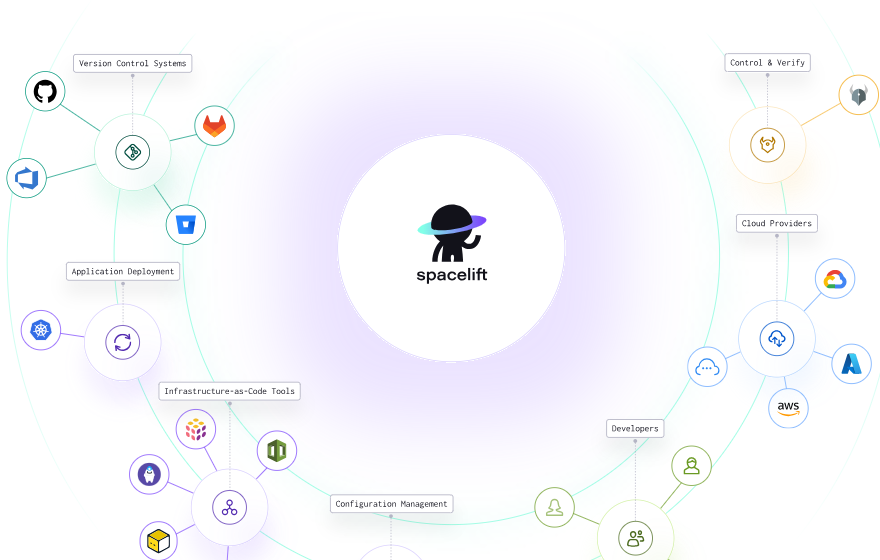
Spacelift Inc. is building on the momentum of its “infrastructure-as-code” orchestration platform, launching an entirely new “agentic” infrastructure deployment model that allows cloud computing resources to be provisioned with natural language commands.
The new offering, called Spacelift Intent, enables DevOps and platform teams to choose between traditional IaC and GitOps, which enable more precise control over cloud infrastructure, or simpler “intents” that dramatically accelerate infrastructure provisioning times. The idea is that mission-critical workloads can still use IaC to ensure compliance and optimize performance, while more experimental tasks can use intents to increase deployment speed and agility.
Spacelift, which recently raised $51 million in a Series C funding round, is a developer of tools that help companies to provision, configure and govern infrastructure orchestration workflows across IaC platforms such as Terraform, OpenTofu, Pulumi, Terragrunt and CloudFormation, as well as application deployment tools such as Kubernetes and Ansible. It’s notable for its strong infusion of generative artificial intelligence, allowing developers and infrastructure teams to describe what they want to achieve in simple language and let AI handle the grunt work.
Its platform handles IaC, configuration management and container orchestration, making it easier for teams to create control mechanisms and split workloads into smaller ones so they can analyze problems more easily. It also lends itself to infrastructure governance, with tools for managing risk and ensuring compliance.
The company says IaC and GitOps, which applies DevOps practices such as version control and automation to infrastructure management and deployment using Git as a single source of truth, remain the “gold standard” for spinning up cloud infrastructure for production workloads. The reason is that IaC and GitOps ensure more stability and control, which is essential for mission-critical applications and systems.
However, not every workload requires such fine-grained control. For things like prototypes, tests and hackathon projects, it’s often more important just to deploy the infrastructure fast and get them up and running in the shortest possible time, to avoid stifling innovation. And this is where Spacelift Intents come into play.
Natural language infrastructure
Spacelift Intent, available in early access and as an open-source project on GitHub, is a new kind of agentic infrastructure provisioning model that eliminates the need to produce and maintain Hashicorp Configuration Language, which is the code used by IaC platforms to manage the underlying servers and other resources.
Spacelift co-founder and Chief Research and Development Officer Marcin Wyszynski said Intents can be thought of as a “vibe coding” experience for infrastructure provisioning. With Intents, DevOps teams just describe the infrastructure environment they need in natural language, and AI agents automatically generate the HCL code that’s required, so applications can be launched in seconds.
Spacelift Intent levels the playing field for DevOps and platform teams, leveraging the same policy and security controls found in Spacelift’s core IaC orchestration platform. They access it through their preferred AI assistant via the Model Context Protocol, and instead of generating HCL code, it just translates their request directly into the infrastructure they require in the cloud of their choice.
Teams remain in control of the environment Intent deploys, with full visibility into the resources used and the reasoning behind the choices it makes, with users able to generate the HCL code if there’s a need. Moreover, because it inherits Spacelift’s policy engine, the infrastructure is governed by default, the company said.
Rob Strechay, managing director and principal analyst at SiliconANGLE Media’s sister organization theCUBE Research, said Spacelift has integrated AI with IaC in a way that’s flexible, open and governed, and can satisfy both the speed and precision requirements of DevOps teams. “By having two happy paths to deployment for workloads of different criticality, this becomes a force multiplier,” he said. “It also solves much of the toil that leads to platform engineering being seen as a roadblock and not an enabler, and can potentially change that narrative.”
Wysznski said agentic automation is urgently needed in infrastructure provisioning, because platform engineering teams can’t keep up with the pace of developers using vibe coding tools. “With Intent, we asked, what if we could bring vibe coding to infrastructure provisioning, in a way that’s safe, governed and complementary to IaC? That’s what we’ve delivered with Spacelift Intent,” he said.
Image: Spacelift